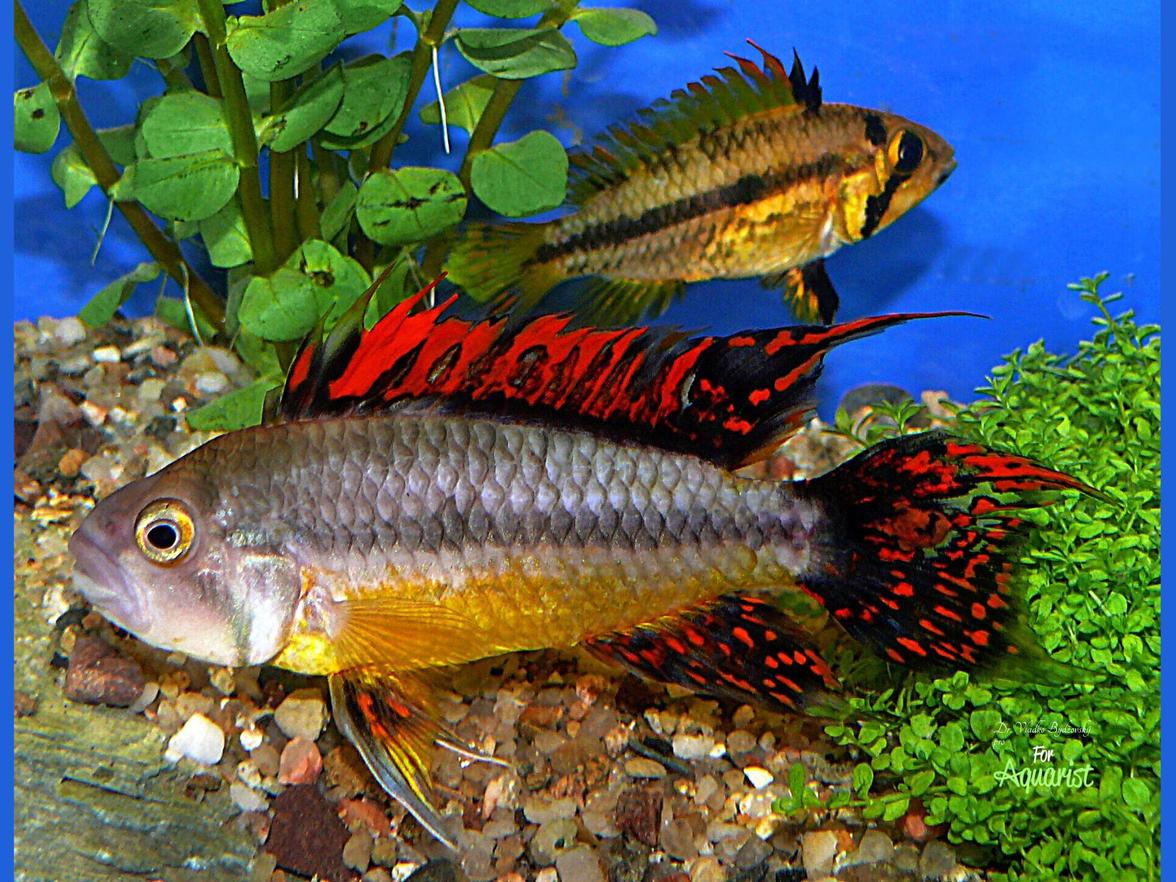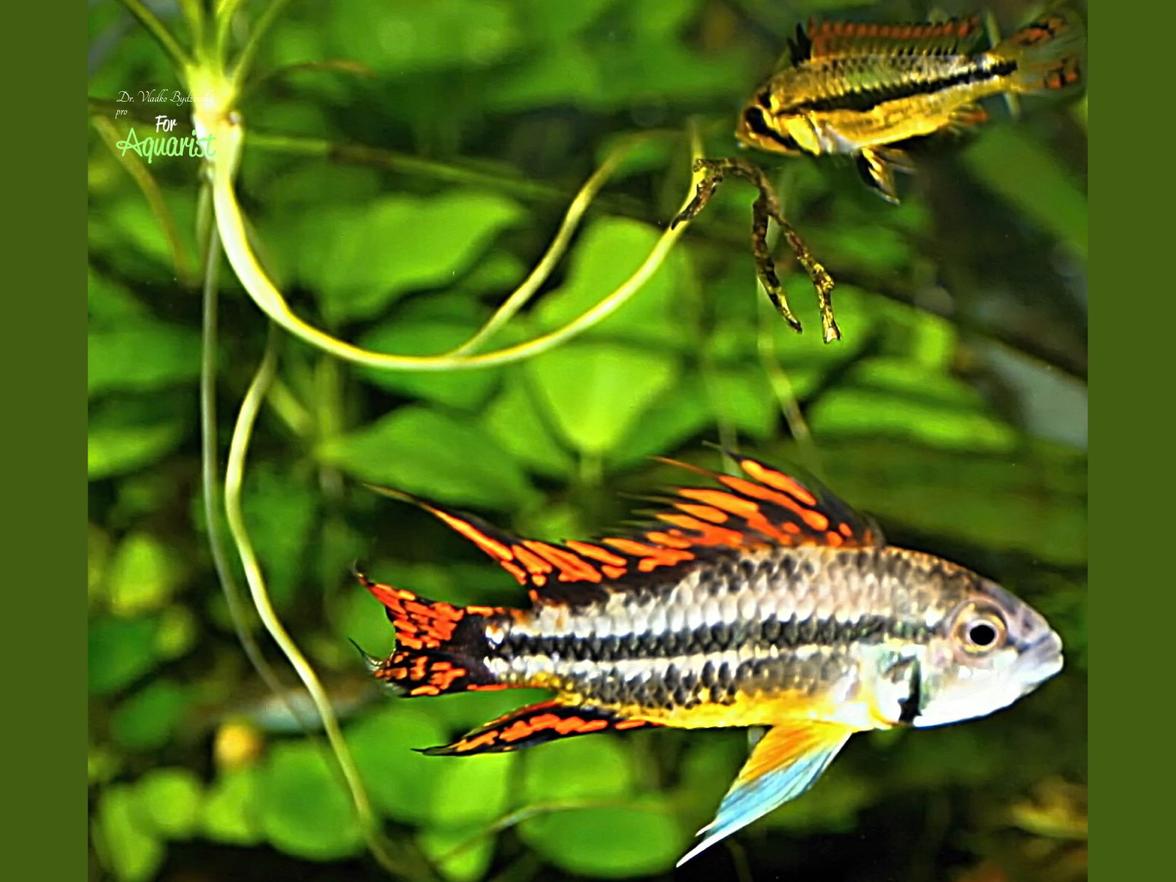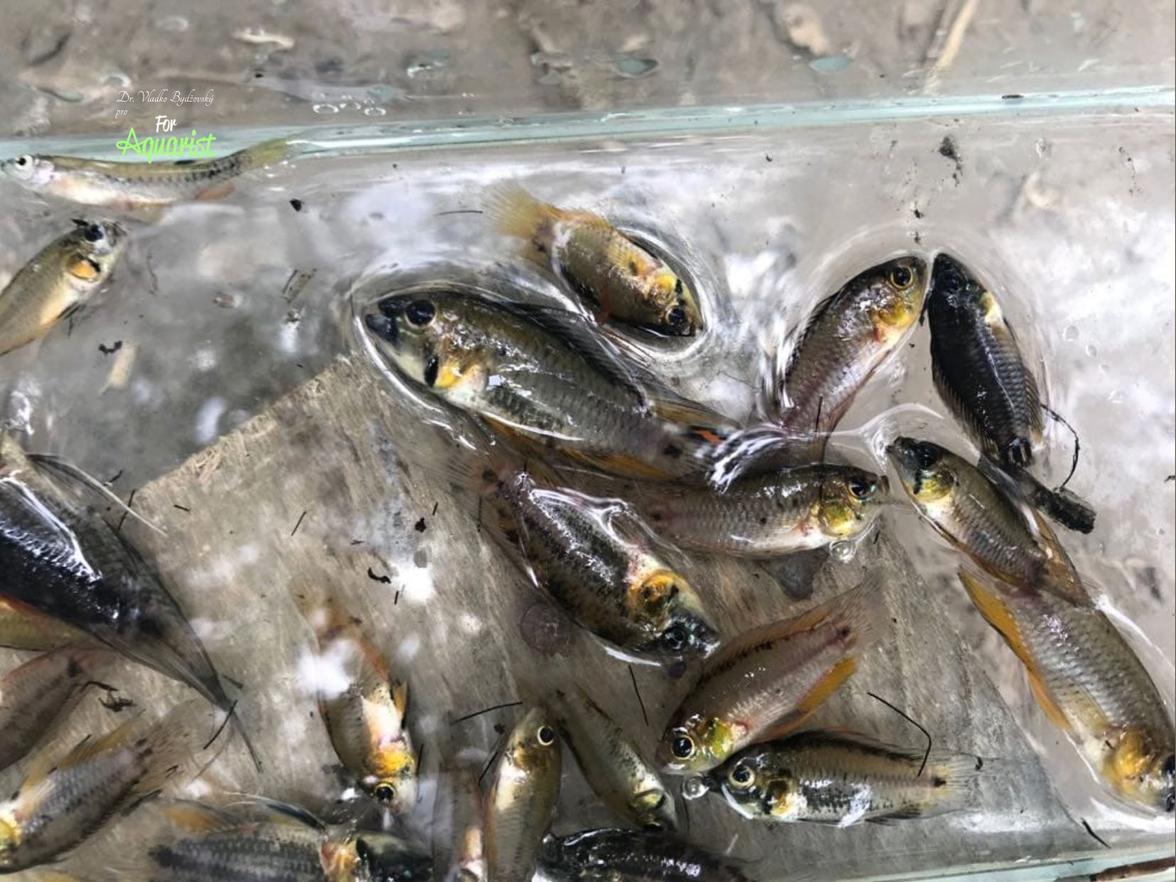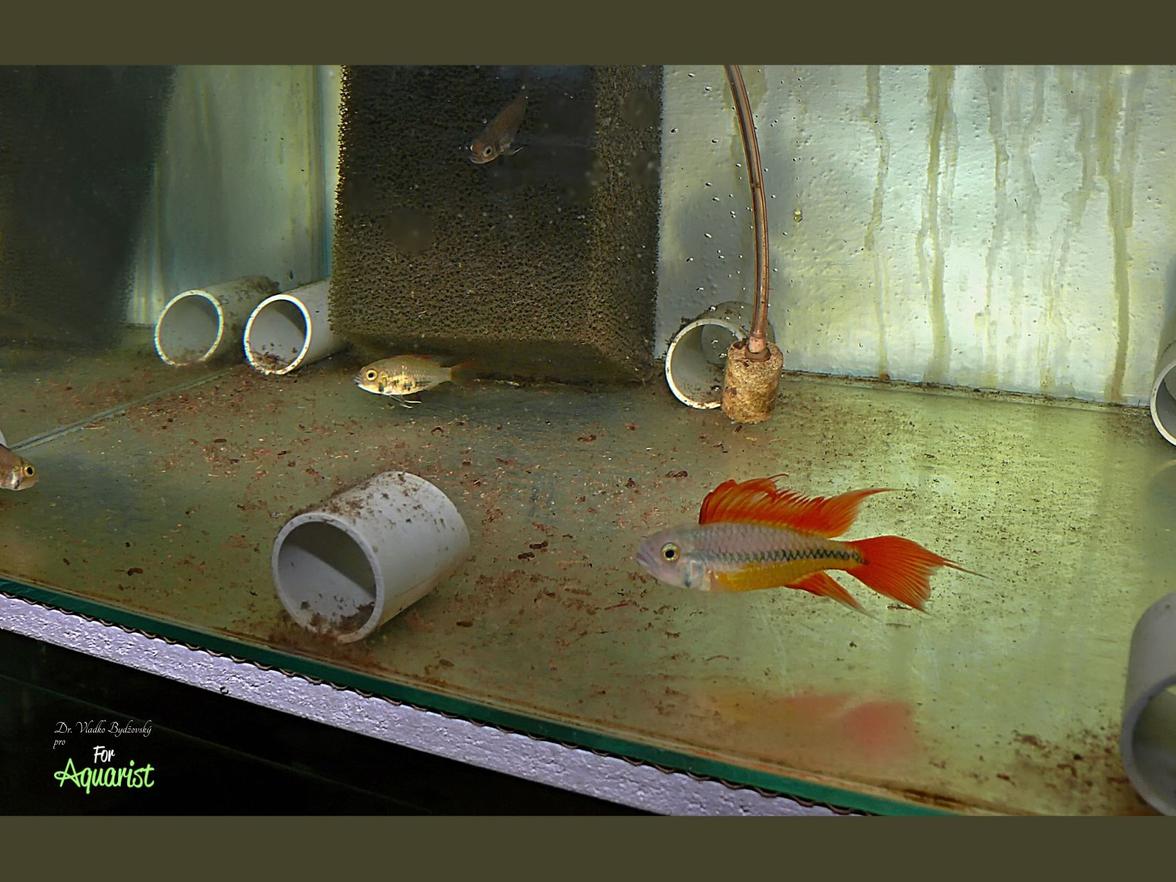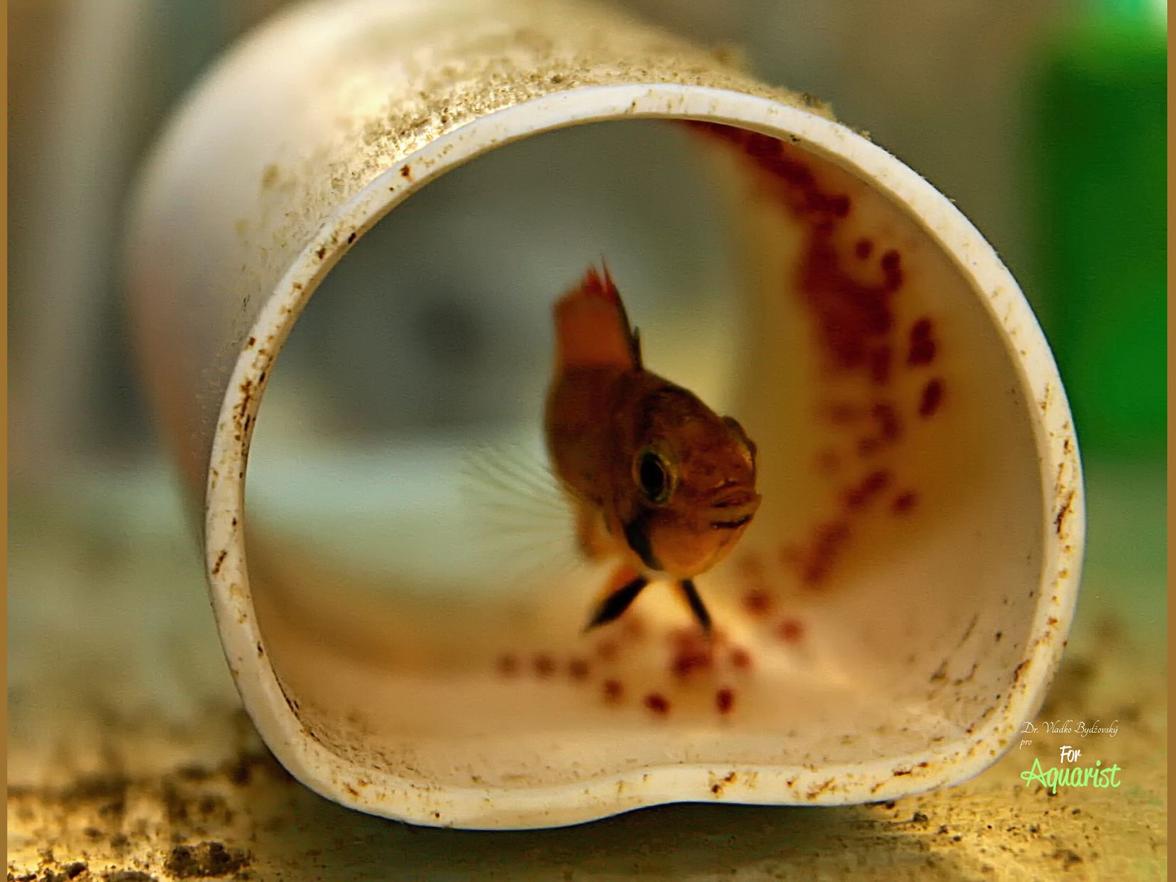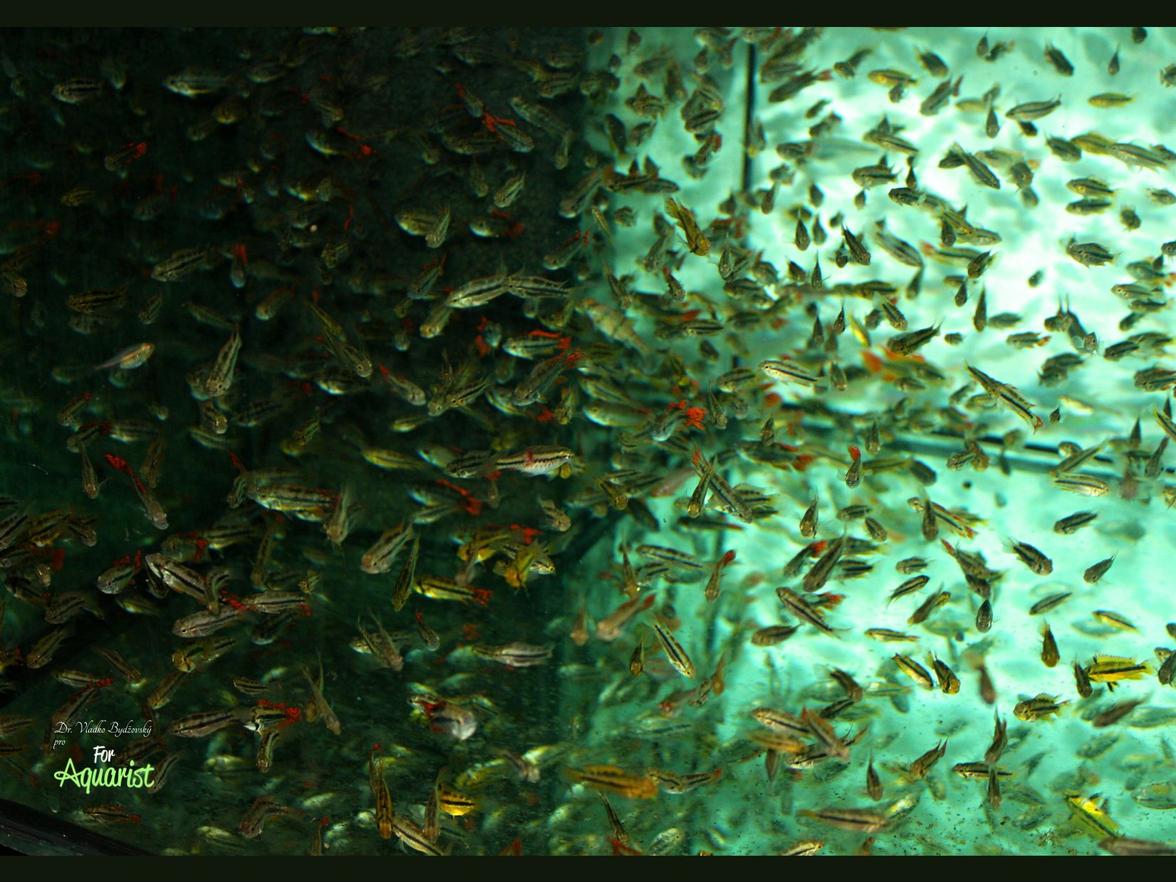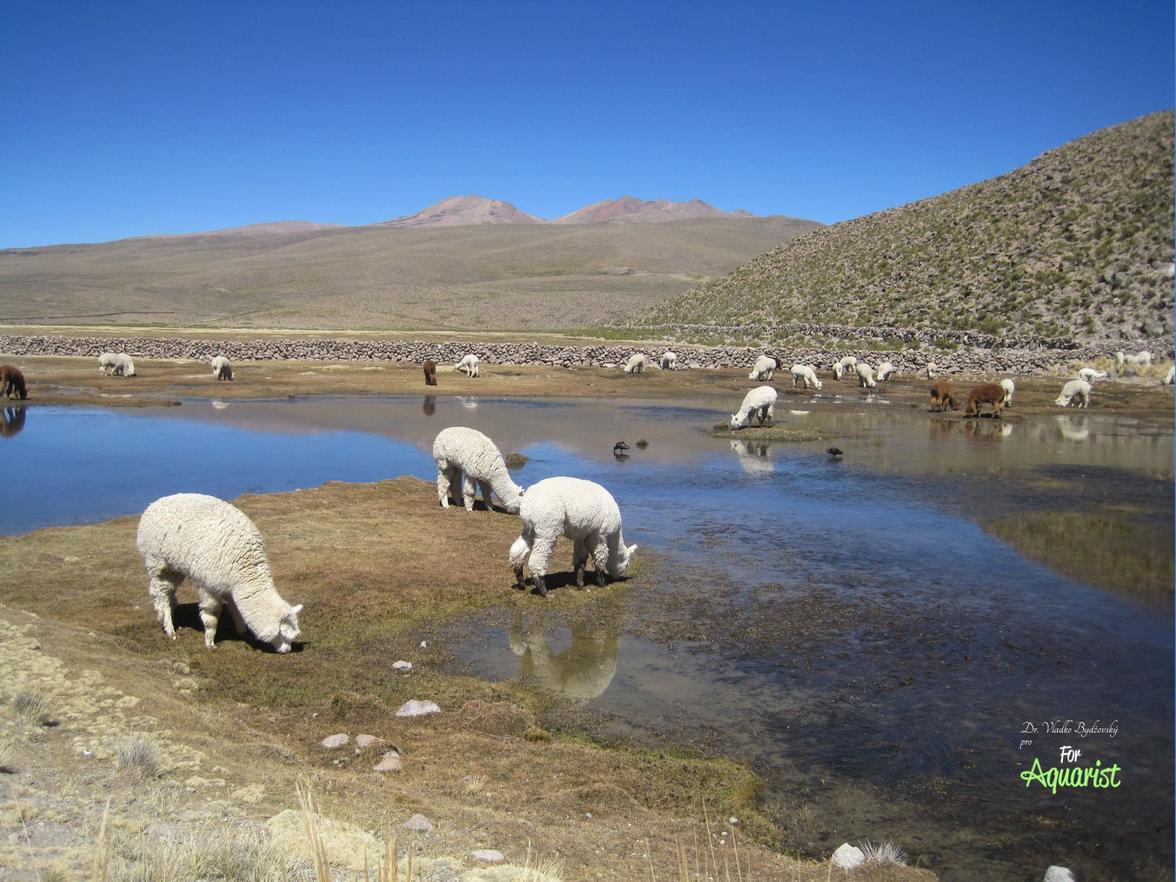The Cockatoo dwarf cichlids (Apistogramma cacatuoides) are among the most popular and commonly kept species of dwarf cichlids in aquaristics. These colorful and behaviorally fascinating fish originate from the Amazon basin and, due to their adaptability, attractive appearance, and interesting care for their offspring, have become a staple in the offerings of aquarium shops. In this article, we will look at their systematics, origin, behavior, care requirements, and specifics of successful breeding.
Cockatoo dwarf cichlid are standard fish in our pet stores and are among the most well-known cichlids kept in aquariums. The genus name Apistogramma, as we have explained many times, consists of the Greek "apistos" – deceptive, misleading, or fraudulent and gramme, which again means line in Greek.
The lateral organ of these Cockatoo dwarf cichlid is split and often incompletely formed. The species name refers to the elongated first ray of the dorsal fin, which resembles a parrot's crest. Therefore, cacatu = Cockatoo, which is a parrot, and oides, from Greek, means appearance, semblance, or resemblance.
Systematics
These cichlids were scientifically described by Hoedeman, 1951, although they were first imported into Germany in 1936. The fish belongs to the complex "Apistogramma cacatuoides", which currently includes 7 closely related species. They are Apistogramma atahualpa, Apistogramma cacatuoides, Apistogramma luelingi, Apistogramma norberti, Apistogramma juruensis, Apistogramma payaminonis and Apistogramma pucallpaensis. Characteristic for all males of this complex are primarily strongly expressed lips, and several other typical features.
Characteristic
In these fish, as with most South American cichlids, sexual dimorphism is distinctly expressed. The male reaches up to 9 cm in length, and especially in some cases (primarily when caring for fry and intimidating intruders) it can look quite frightening. Especially prominent are its distinctive lips on a relatively large mouth, it is definitely more brightly colored.
Today, it is difficult to find the original and classic form. Mostly, we are surrounded by colorful variants, with red or yellow predominating. The most common variants here are red, commercially, and often under German trade names such as “rot,” “doppelt-rot,” and “dreifach-rot.” Another color group is represented by yellow (“gelb”), and the last one is orange (“orange”). Females remain smaller at 4-5 cm, and all color forms are very similar, sometimes even having red-tinted tails (especially in doppelt-rot or dreifach-rot), as we see in males. A typical inhabitant of white waters.
Homeland
Cockatoo dwarf cichlids live in a large area of northwestern South America, where lies the most important export center for them – the Peruvian Iquitos. They are found in the basin of the Rio Ucayali in Peru, in the upper basin of the Amazon River up to the vicinity of the city of Leticia, which is located in the border area of three countries – Peru, Brazil, and Colombia. The southwestern boundary of this species' distribution lies around the city of Chicosa. There, the sacred river of the Incas, the Rio Urubamba, joins the Rio Tambo and further forms the Rio Ucayali. The possibility of occurrence around the city of Cruzeiro do Sul in Brazil is also being considered. Depending on the location, the coloration of individuals, especially males, varies somewhat. Generally, however, the colors that today's European breeds have are not seen in nature. Here, gray and brown prevail.
Especially recently, interesting specimens have been imported from the Peru-Colombia border, from the Rio Putumayo basin. The fish mostly live in shallow waters of ponds and residual waters, in small streams and brooks with a thick layer of fallen leaves, branches, and other various hiding places. The fish are often found in the coastal zones of rainforest streams, under the branches of trees above the flow. The water column here is 5–40 cm high (STAECK, 2000). Aggressive tetras occur together. Hoplias malabaricus, Erythrinus etythrinus, cichlids of the genus Crenicichla. There are also many killifish of the genera Rivulus and Pterolebias. Among cichlids, they occur together Apistogrammoides pucallpaensis and Apistogramma eunotus.
It is interesting that despite significant fluctuations in water levels throughout the year and the number of various predators, Cockatoo dwarf cichlids live up to 4 years in the wild. In the upper Rio Ucayali, the water has a hardness of about 10-12 °dGH, conductivity of about 400 µS, and pH of 7.4-7.6.
These data explain why Apistogramma cacatuoides behaves very well in various common tap waters of our cities. There were even experiments to determine in which water the fish would thrive better, whether in soft water (conductivity 60µS, pH 5.8) or in tap water with 15 °dGH and pH 7.5. After six months, it was found that the fish in both conditions had the same coloration, but in the harder water, the fish regularly spawned and had up to 100 fry for one spawning, while the fish in acidic and soft water did not spawn. Again, another proof that there is no need to test nature too much to see if it has devised things well.
Breeding
We can manage the breeding in both species and community tanks, which have a volume of 50-80 l or more, densely planted tanks with numerous roots, stones, and other hiding places. For the bottom, we use fine gravel or preferably fine sand. The temperature should fluctuate between 22-26 °C, pH around neutral, water moderately hard to hard. Good filtration with not too strong water flow is recommended. They are best accompanied by small and calm tetras. Often, cohabiting armoured catfish and armored catfish usually disrupt the care of fry in South American cichlids, and I have often witnessed that many cichlids do not even spawn in their presence. Adult fish usually stay at the bottom of the communal tank – especially the females, while the male occasionally makes trips to the middle and upper layers of the tank. This is where the mentioned tetras come in handy, which, with the exception of the red phantoms,Megalamhodus sweglesi) and redhead (Petitella bleheri) are kept in the middle and upper layers of the tank.
Another option is to keep these fish separately in a tank – either in pairs, then usually a 10-20 liter tank with a tube or pots is sufficient. If we want to keep more females together, we place the tubes at least 30-40 cm apart so that the females do not attack each other too much. Each has its own mini territory with a diameter of 20-30 cm. The male has a larger territory, capable of managing 3-4 females.
The tank does not need to have a high water column; rather, the bottom area is more important, and above all, there should be enough hiding places. In such a harmoniously functioning tank, we can then observe during breeding, if there are at least two females that are simultaneously taking care of the fry and the differences in the size of the fry are not too large, how females "steal" each other's offspring, which are carefully tended to.
Breeding
Care for offspring is very strongly expressed in the females of this species, while the male is typically "Don Juan". If we want to breed fish for profit, it is more advantageous to keep the fish separately in pairs that form on their own. In forcibly assembled pairs, the female is sometimes beaten by the male. Some males are more aggressive and have tendencies towards this violence.
Caring for fry is one of the most beautiful magic of aquaristics. The female lays red-colored eggs on the upper part of the cave, carefully fanning them with her fins to provide fresh water, after hatching she repeatedly rearranges them with her mouth and after they swim freely, she guides the "young" around the aquarium. The fry can be easily raised on fine brine shrimp nauplii or natural non-powdery dust. Breeding is relatively easy and is among the simplest of South American cichlids.
Images:
- A pair of Cockatoo dwarf cichlid "dreifach-rot".
- A pair of Cockatoo dwarf cichlid "doppel-rot".
- Male Cockatoo dwarf cichlid "rot".
- Cockatoo dwarf cichlid in the wild do not attract demanding aquarists much. If they had as much red as their aquarium relatives, they would quickly become prey to many predators.
- Orange form cichlids in the breeding tank. If we do not breed the fish in pairs, it is always better to put more females into spawning, at least 3-4.
- Cockatoo dwarf cichlid are productive fish.
- The blind tributary of the Rio Ucayali also serves as a "power station" for the number of alpacas that live here in large quantities.
